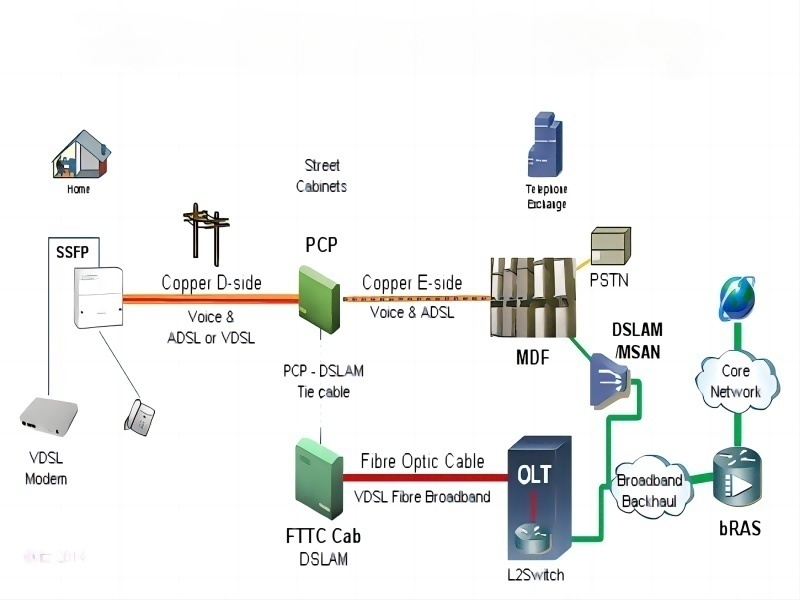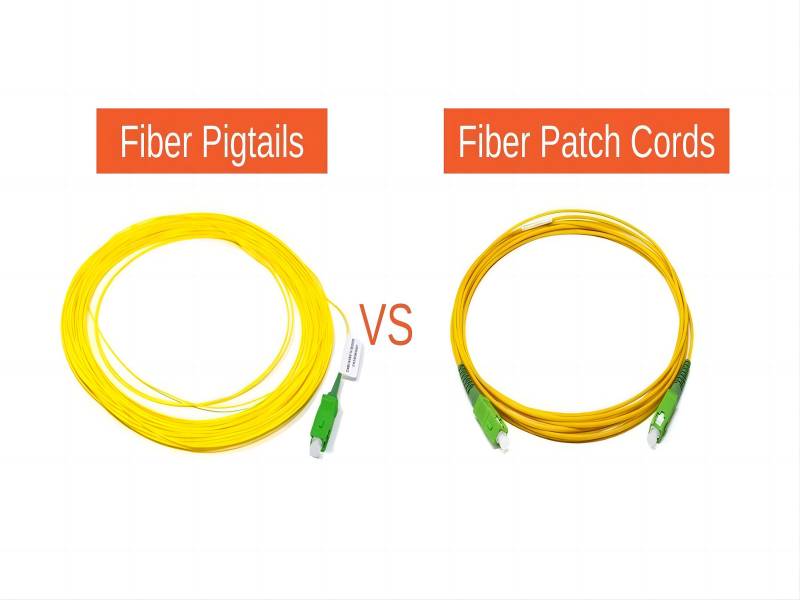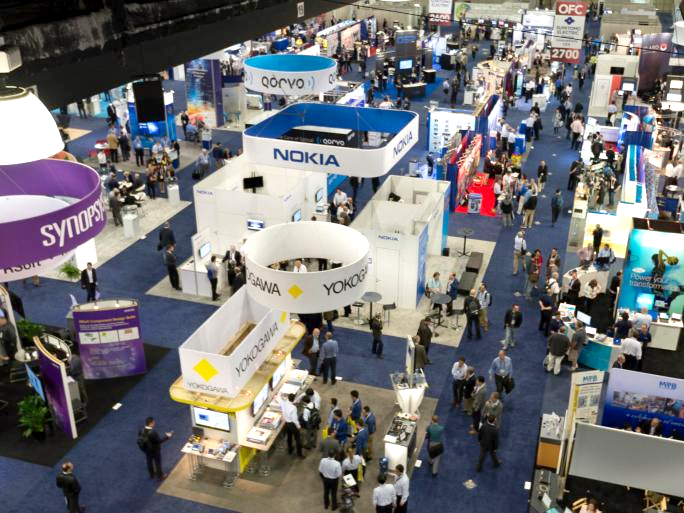The SFP, SFP+, SFP28, QSFP+, and QSFP28 transceiver types are not new to professionals. These hot-swappable modules can be used to connect network switches and other network devices such as servers or transceivers for data transmission. In the world of network hardware, it is important to understand the differences between SFP, SFP+, SFP28, QSFP, and QSFP28 transceiver modules.
In this post, we’ll cover all the key differences between SFP+, SFP28, QSFP+, QSFP28, and QSFP-DD transceivers and how you can choose between these five form factor transceiver modules before purchasing.
What is the SFP Transceiver?

SFP stands for small form-factor pluggable and was first introduced in 2001. Designed to replace larger form factor GBICs, it is also known as a ‘mini-GBIC’ (Gigabit Interface Converter). SFP transceivers are miniature transceivers that support data rates up to 1G data rate and connect fiber optic cables to a variety of network devices such as switches, routers, NICs, and wireless access points. wireless access points. Depending on the data rate and application, several SFP transceivers are available, including 155M SFP, 622M SFP, 1G SFP, 2.5G SFP, 2G/4G Fiber Chanel SFP, 3G SFP, and 6G SFP, which are used in fiber-optic Ethernet networks and are particularly common in commercial networks. SFP transceivers are one of the most widely used devices in fiber-optic networks today, but with the demand for higher bandwidth for 5G applications or the Internet of Things, for example, the 1G SFP modules are now set to exit the market in the future, even though they still have some market share.
What is the SFP+ Transceiver?

The SFP+ transceiver is a more advanced version of SFP, introduced in 2006 with higher data rates of up to 10 Gbps. Data transfer speeds are 8Gbps, 10Gbps, and 16Gbps. The transmission distance varies from 30 meters to 120 kilometers. Depending on the application, SFP+ transceivers can be divided into five broad categories: dual-fiber SFP+, bidirectional SFP+, copper SFP+, CWDM SFP+, and DWDM SFP+. SFP+ transceivers are available in a number of different connector types, such as LC duplex, LC simplex, and RJ45.They have the exact dimensions of SFPs, so they can be easily integrated into existing infrastructure. It is one of the most popular data center cabling applications.
What is the SFP28 Transceiver?

SFP28 stands for Small Form Factor Pluggable 28 and was introduced in 2014. It is a third-generation SFP connectivity system built in accordance with the IEEE 802.3by specification (25GBASE-CR) for 25G throughput. The SFP28 is an improved version of SFP+ designed for 25G signal transmission. The SFP28 fiber optic transceiver type has the same physical dimensions as SFP and SFP+, but it provides 25Gbps of electrical connectivity per lane. Depending on the application, SFP28 transceivers can be divided into six categories: dual-fiber SFP28, bidirectional SFP28, CWDM SFP28, DWDM SFP28, SFP28 DAC, and SFP28 AOC. Compared to SFP+, SFP28 offers higher bandwidth capabilities.
What is the QSFP+ Transceiver?

QSFP+ (Enhanced Quad Small Form Factor Pluggable), introduced in 2012, consists of four lanes at 10Gb/s rates and supports LC duplex and MPO-12 fiber connectors. QSFP+ supports 4x10G or 4x14G SFP+ data rates compared to SFP+ for higher bandwidth capabilities. It offers a variety of data rate options for Ethernet, Fibre Channel, InfiniBand, and SONET/SDH technologies.
What is the QSFP28 Transceiver?

QSFP28 is an abbreviation for Quad Small Form Factor Pluggable 28, also introduced in 2014. It has the same physical dimensions as QSFP+. The QSFP28 transceiver is designed for use with 100 Gigabit Ethernet, EDR InfiniBand, or 32G Fibre Channel networks. The QSFP28 100G transceiver features four high-speed differential signal lanes with data rates ranging from 25 Gbps to 40 Gbps. In the 100G optics market, the QSFP28 is now the standard interface of choice for 100G applications.
SFP vs. SFP+ vs. SFP28 vs. QSFP+ vs. QSFP28

SFP vs. SFP+
Same size, different speed and compatibility. SFP+ is used for 10 Gb Ethernet applications, while SFP is used for 100BASE or 1000BASE applications. SFP complies with IEEE802.3 and SFF-8472 standards, while SFP+ is based on SFF-8431. SFP+ ports can accept SFP fiber, but at reduced speeds to 1 Gbit/s. The SFP+ transceiver must not be plugged into the SFP port or may damage the product or port. Generally, SFP+ is more expensive than SFP.
SFP+ vs. SFP28
SFP+ is mainly associated with 10G connectivity, while SFP28 is generally associated with 25G connectivity. They use the same form factor, and the pinouts of the SFP28 and SFP+ connectors are compatible. As a result, SFP28 will work with SFP+ fiber, but at a reduced speed of 10 Gbit/s. If the 10G SFP+ module can be set up for 10G transport, the port will work with the SFP28 port on the network switch, otherwise, the SFP+ module will not work.
SFP+ vs. QSFP+
The main difference between QSFP+ and SFP is the quadrilateral. QSFP+ is an evolution of QSFP that supports four 10 Gbit/s lanes carrying 10 Gb Ethernet, 10G Fibre Channel, or InfiniBand, allowing for 4 10G cables and stackable network designs for better throughput. QSFP+ can replace 4 standard SFP+ transceivers, resulting in higher port density and overall system cost savings than SFP+.
SFP28 vs. QSFP28
The main difference between QSFP+ and SFP is the quadrilateral. QSFP+ is an evolution of QSFP that supports four 10 Gbit/s lanes carrying 10 Gb Ethernet, 10G Fibre Channel, or InfiniBand, allowing for 4 10G cables and stackable network designs for better throughput. QSFP+ can replace 4 standard SFP+ transceivers, resulting in higher port density and overall system cost savings than SFP+.
Transceiver modules are one of the most critical components in high-performance networks. There is no doubt that the main driving force behind the evolution of optical transceivers is the need to achieve higher bandwidth rates in a smaller form factor. After having a clear understanding of them, you must also consider your network traffic, transmission distance, and future-proof network requirements. You will make the right decision because you understand the difference between SFP, SFP+, SFP28, QSFP+, QSFP28, QSFP-DD, and OSFP.







